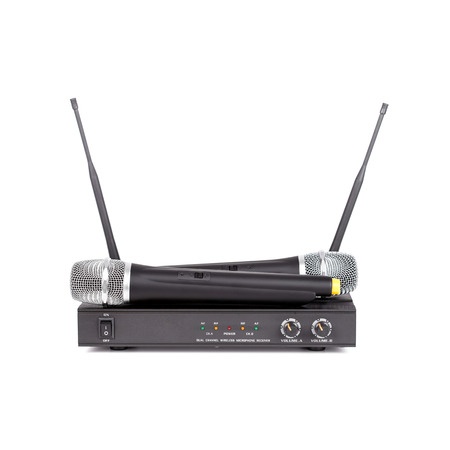These days, wireless microphones are essential in presentations and performances large and small. Whether someone is leading a classroom lecture, making announcements in a convention center, or leading a sermon in a house of worship, wireless audio helps by getting rid of those pesky cords, allowing speakers you get around with ease while broadcasting their voice to the entire crowd at once.
Still, wireless microphones are only as good as the type of signal, frequency and equipment you are using. The kind of equipment differs based on the size of the room, the number of people within it, and the depth of your audience. There are a few options for audio systems that you can choose from depending on your situation, though the most common selections are VHF, UHF and ISM. Let’s get a better understanding of these different technologies with help from Audio-Technica.

VHF
VHF is Very High Frequency, and it is widely used for professional events and seminars.
VHF is ideal for smaller networks where less than five systems are being used at the same time. They are perfect for “open” radio environments where there is limited interference and when you do not have a direct line of sight from the receiver to the transmitter.
These systems also tend to be much cheaper and are ideal for organizations with limited budgets. That also means that sometimes you get what you pay for, but they are perfect for smaller venues and budgets.
UHF
UHF is Ultra High Frequency and more than just a movie starring Weird Al Yankovic. UHF, like VHF, is also commonly used for big venues, often picking up where VHF leaves off.
UHF is a great choice if you take audio on the road to different cities or if you need to use more than five or six wireless systems at the same time. The major difference between UHF systems and VHF is that UHF is ideal for large venues where there might be a lot of people, props or equipment crowding the area between the transmitter and receiver.
Of course, these systems can be a bit more little pricey, but the extra money is well worth it – especially in expansive ballparks or arenas.
ISM
ISM stands for Industrial, Scientific and Medical. Although they were designed for scientific and medical purposes, they are used commercially for wireless microphones and other applications.
Unlike UHF and VHF, ISM is a digital wireless system. This means that audio signals are transmitted uncompressed, resulting in a cleaner-sounding audio and more reliable coordination of wireless frequencies. ISM devices also transmit on a 2.4 GHz frequency, the same as that commonly used by Wi-Fi, Bluetooth technology and other modern technology, notes SonicScoop, meaning that the transmission capabilities have been well tested and refined.
ISM wireless devices are also an excellent choice for large venues where many other signals may be utilized. They are also an excellent option for open spaces where the signal from a microphone might have to travel more than 100 feet to reach the receiver.
Whether you are in need of a new audio system for your church or need to wire up a full sound system for a new football stadium, Lowrance Sound Company can provide your organization with the tools, equipment and education you need you need to reach your audience. Call us today at 800-852-5418 today for more information.
